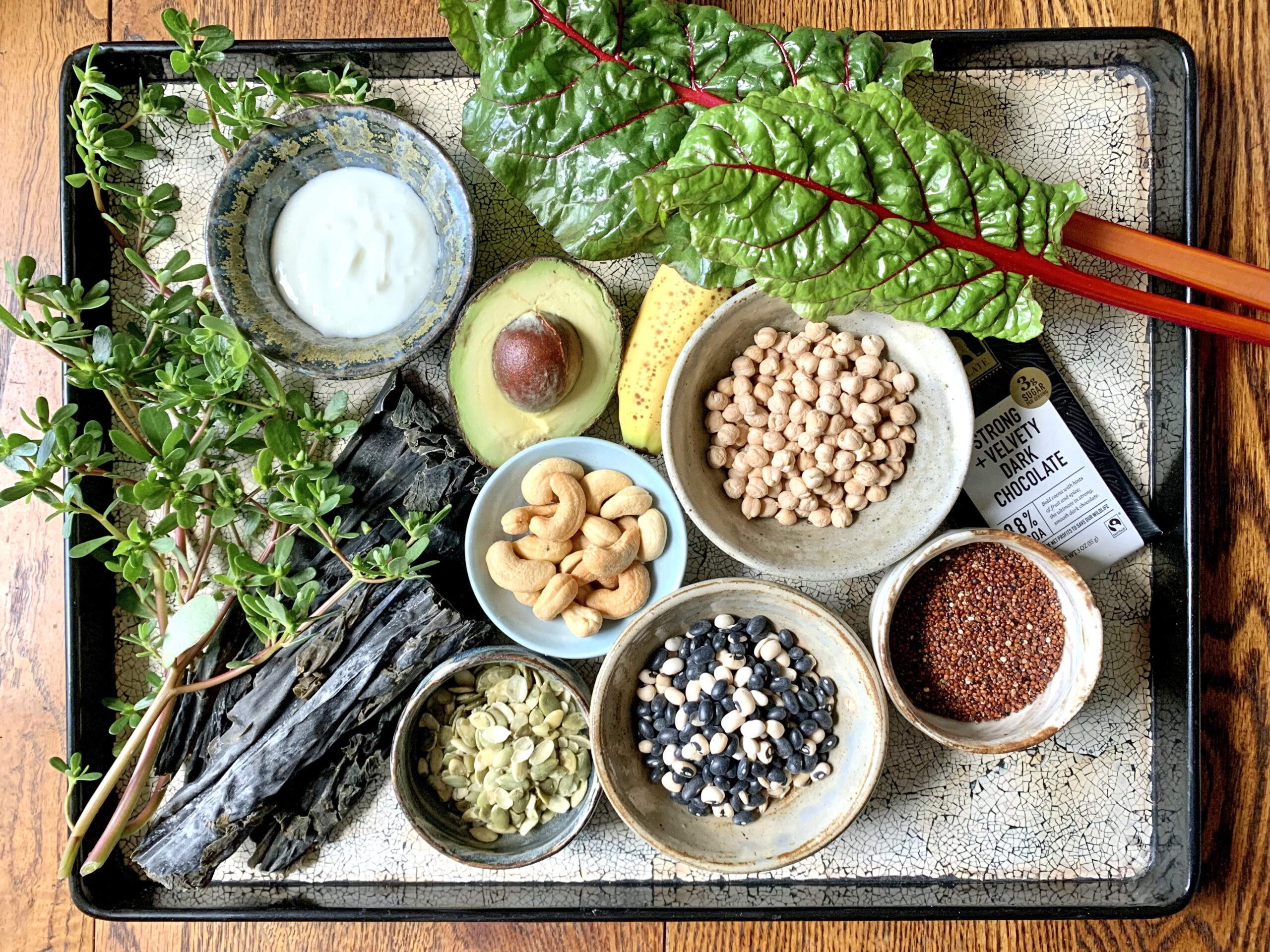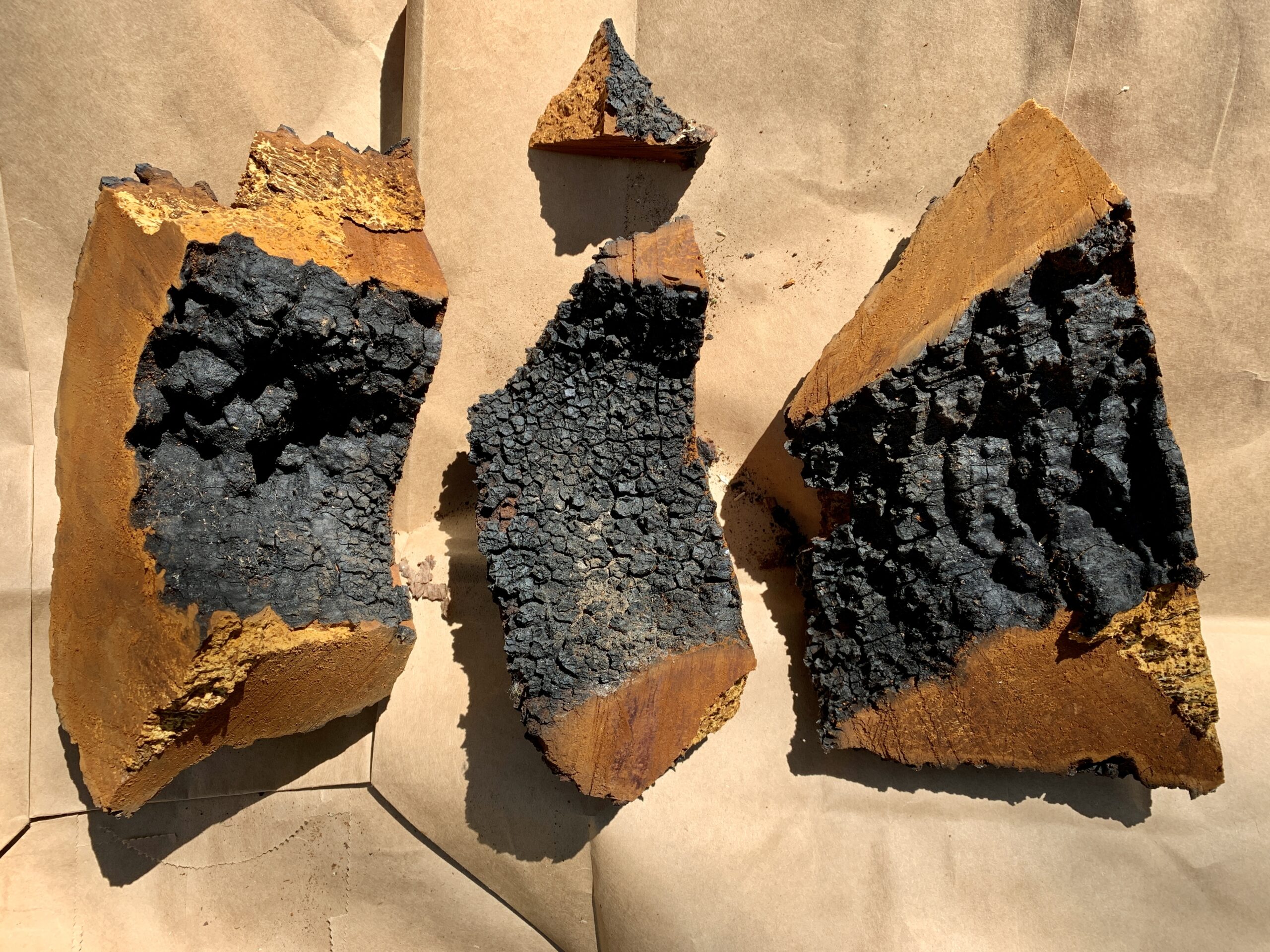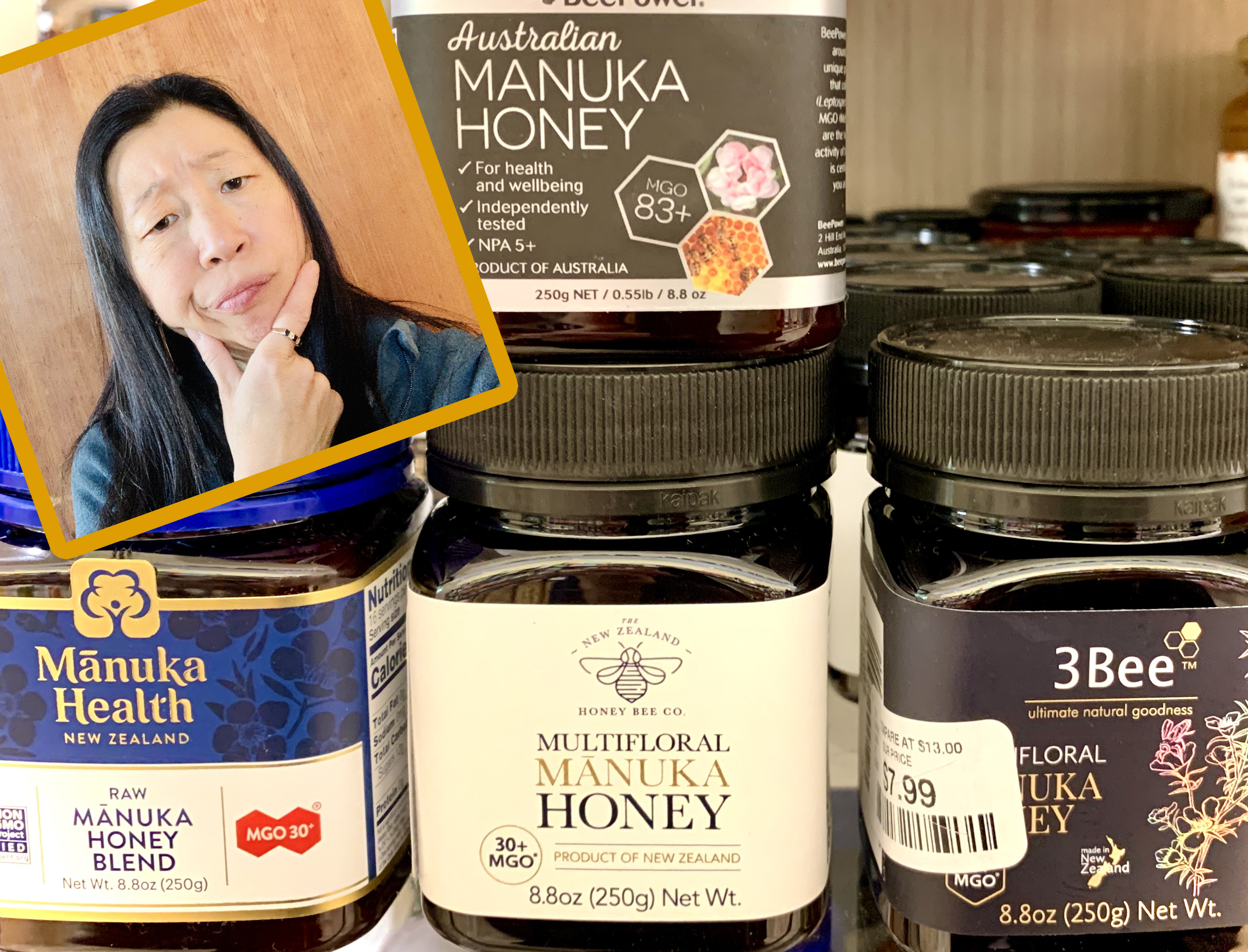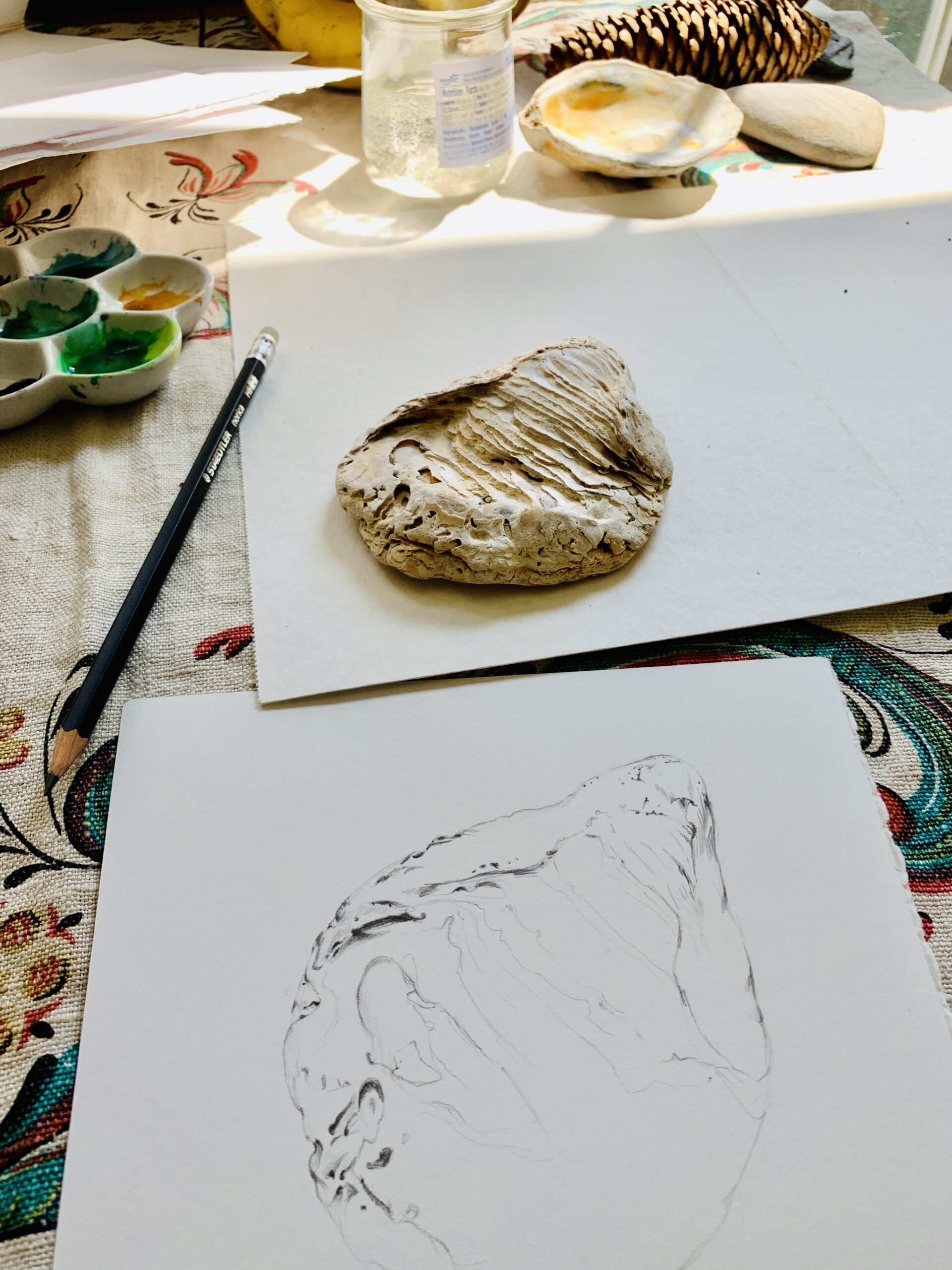What is magnesium and why do we need it?
Let me start with the basics. Magnesium (Mg), is atomic number 12 in the periodic table. It was first discovered in 1755 by a man named Joseph Black. In its natural form, magnesium is a silvery-white metal that only appears in combination with other elements. Magnesium ignites readily and burns with a bright light; ever heard of flares or fireworks? Magnesium. Paradoxically, magnesium oxide is used to make heat-resistant firebricks. Pardon my quick digression – now I’m back to tell you more basics about magnesium.

Magnesium is the eighth most abundant element, mostly found in large mineral deposits of magnesite and dolomite on the earth’s crust. The ocean, however, is a major source of magnesium – in the order of trillions of tons! Without this abundant element, plant and animal life would not exist. As we all know, chlorophyll is the chemical that allows plants to perform the process of photosynthesis. And, wouldn’t you know, at the center of chlorophyll is one molecule of magnesium. So, without plants, there would be no humans.
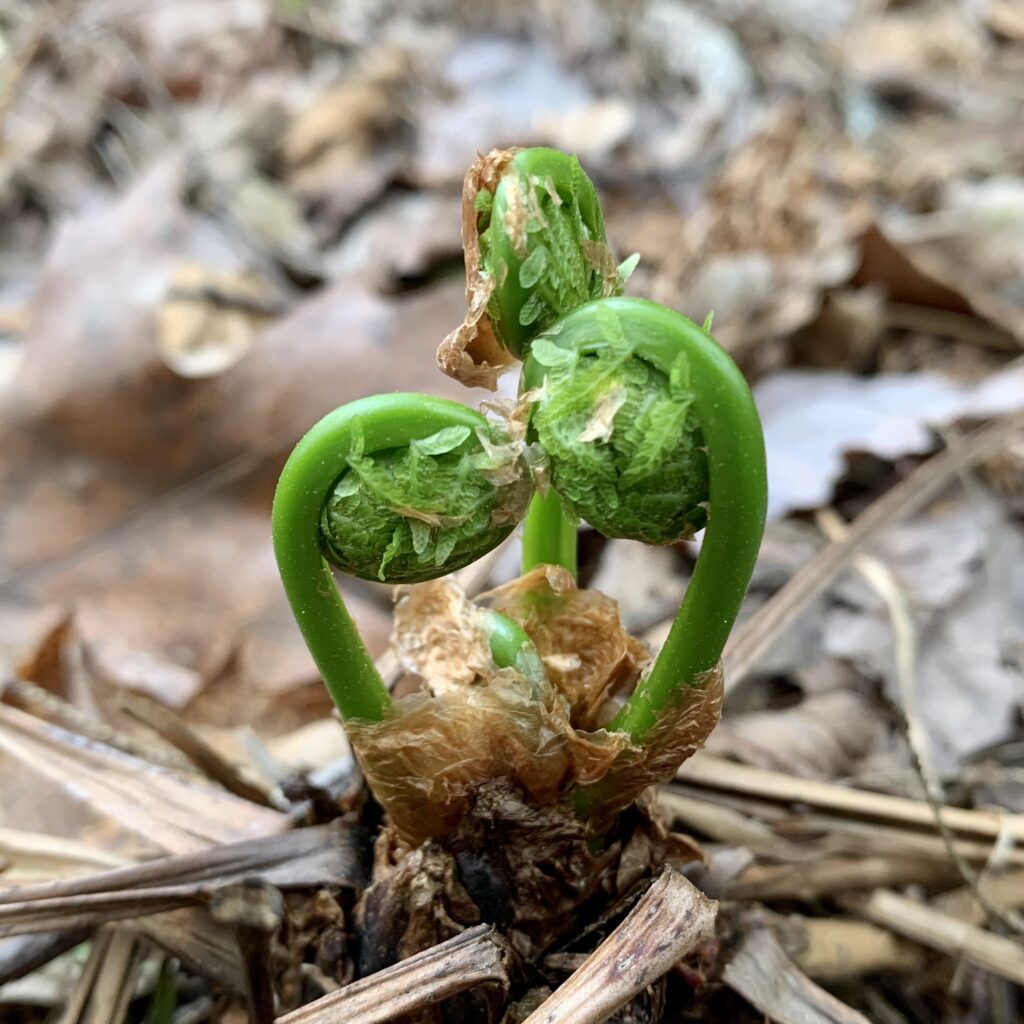
Let me pause here briefly to remind you all that I am not a doctor. Anything shared here is for informational purposes only and does not constitute any type of diagnosis, analysis, prognosis, treatment, or prescriptive health care. I encourage you to do your own further research and seek advice from your medical care team. Now back to magnesium.
While every single human cell requires magnesium to function, most of the body’s magnesium is stored in bones and teeth. Biologically speaking, magnesium is responsible for the performance of essential functions of the human body that include making protein, building bone, creating DNA, and regulating blood sugar levels and blood pressure. Additionally, magnesium acts as an electrical conductor that contracts muscles and helps the heart produce a steady beat. And, while not fully understood but worthy of more research, magnesium can increase dopamine levels, resulting in better sleep leading to a decrease in anxiety, elevated mood and reduced depression. Whoo, that’s a lot of functionality!
How do I know if I’m getting enough magnesium?
Unfortunately, most Americans are not getting enough magnesium (due, in part, to soil depletion), and because magnesium is integral to human vitality and so many of its essential processes, its deficiency is implicated in many of our diseases and disorders. Magnesium deficiency can manifest in its early stages as loss of appetite, nausea, vomiting, fatigue and weakness. As magnesium deficiency progresses, numbness, seizures, cramps, personality changes, abnormal heart rhythms, and coronary spasms can occur. Over time, chronic low intakes of magnesium can increase the risk of certain diseases/disorders that may include the following:
- Cardiovascular disease such as hypertension and arrhythmia
- Constipation
- Depression
- Insulin resistance
- Migraines
- Osteoporosis
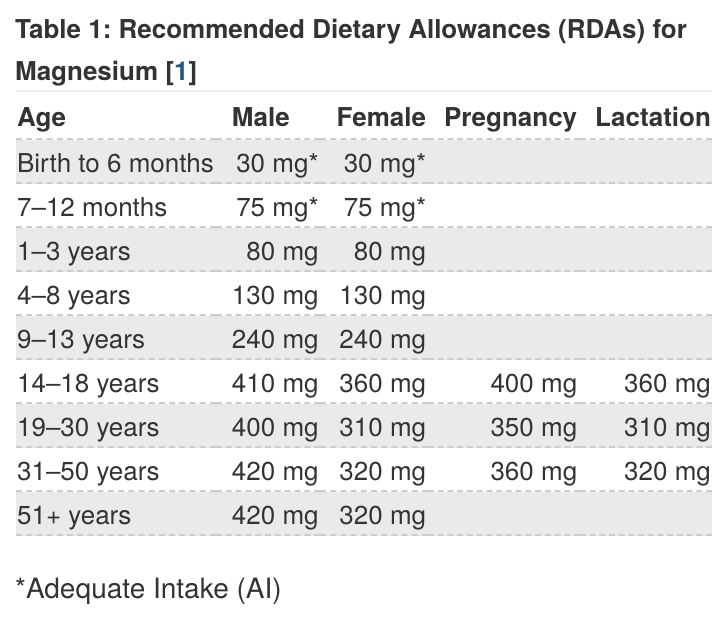
Who is most at risk for magnesium deficiency-related diseases?
- Alcohol-dependent people – Excessive alcohol consumption is tied to digestive upset, resulting in malabsorption and organ malfunction that leads to flushing of magnesium through urine.
- Elderly – These folks simply do not absorb magnesium as readily.
- Ultra athletes – Prolonged sweating and exertion accelerates magnesium loss.
- People with GI disorders – Insufficient digestion leads to malabsorption of magnesium.
- People who are under constant physical and mental stress – Magnesium is lost more rapidly when the body is in the sympathetic mode of fight or flight.
- People taking certain medications – Magnesium can interact with or reduce the efficacy of certain drugs.
Magnesium deficiency is literally at our feet
As I mentioned briefly above, it is increasingly more difficult – but not impossible – to obtain a healthy amount of magnesium simply by eating whole foods, regardless of how wholesome your diet is. The major factor in this inaccessibility is depleted soil created by current commercial agricultural practices. Quite simply, the common use of NPK fertilizers (nitrogen, phosphorus, potassium) robs the soil of magnesium. Remember to consider the grains, seeds, nuts and fruits you may be buying in bulk; these all come from large growing operations that are likely not replenishing the soil with nourishing minerals. In fact, they may be planting hybrid plants that are bred to grow specifically in mineral-depleted soil. Huh, why would anyone do that?? To make matters worse, nutrients in produce are further diminished during harvest, transport, handling and storage. This is all to say that knowing where and how your food is grown is incredibly important so, get out there and make friends with a farmer, and talk dirt!
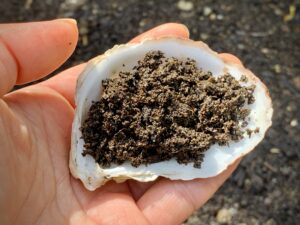
OK, so how can magnesium help us?
When we are getting an adequate amount of magnesium, our bodies are better able to sleep well, build strong bones and teeth, have less anxiety and fight off cardiovascular disease, migraines, constipation, depression, and a whole host of other aforementioned disorders.
Detox Powerhouse
Magnesium has the ability to remove heavy metals and toxins from the body and prevent certain minerals like calcium from re-entering and depositing where it shouldn’t. This important function also protects the brain from harmful toxins such as aluminum from getting in.
Fights Tooth Decay & Bone Loss
Multiple studies have demonstrated that magnesium, not calcium, is responsible for producing hard tooth enamel and strong bones. Other studies have found that bone density was improved with diets sufficient in magnesium. which could be especially consequential for postmenopausal women.
Defends Against Heart Disease
The heart requires proper functioning of electrical impulses and magnesium is instrumental in executing that task, thereby preventing unsafe levels of calcium build-up and resulting heart disease.
Mood Booster & Relaxer
Serotonin, known as the “feel good” hormone, works in concert with magnesium to maintain proper reciprocation between cells and the brain, promoting equilibrium of mental and emotional health.
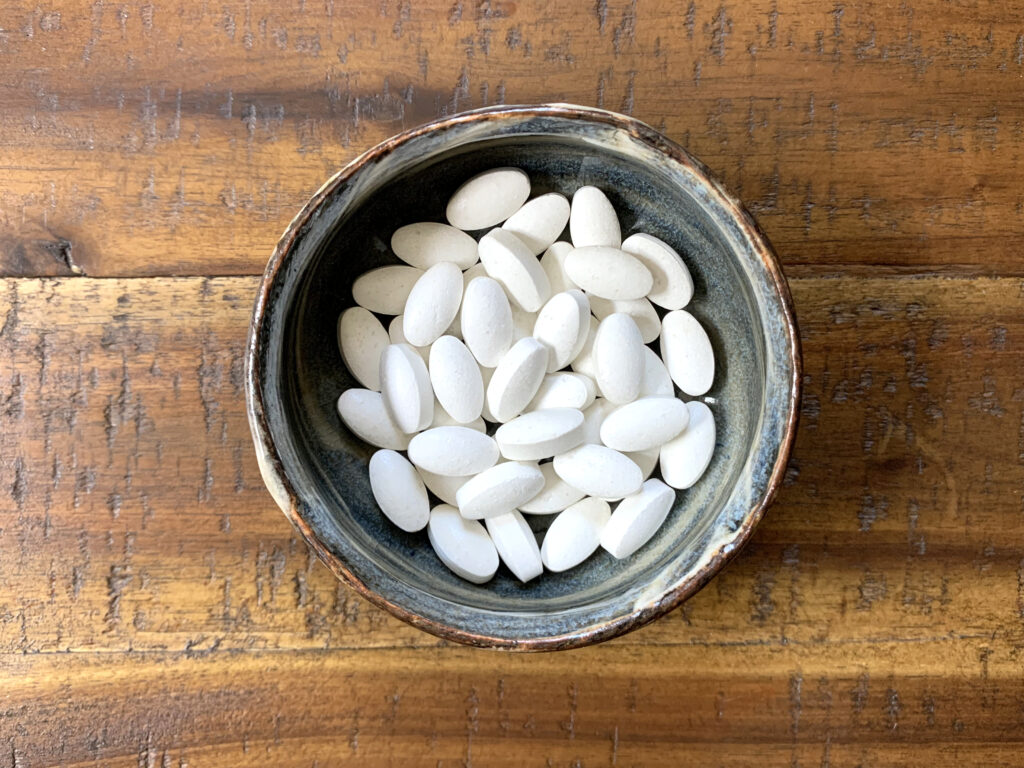
Move over melatonin
Speaking of sleep, raise your hand if you could use a better night’s sleep. You can’t see mine, but it is raised. I’m one of the people for whom melatonin supplements do not bring on doziness and, in fact, quite the opposite. So if you are like me or don’t want to take hormones, magnesium intake could be an ally for a better night’s sleep. Magnesium can be effective because it can calm the nervous system, relax muscles and shut down wakefulness by regulating GABA (gamma-aminobutyric acid) in the brain. So, “how much should I take?” might be your next question. According to the National Institutes of Health’s Office on Dietary Supplements the daily recommended dose to facilitate sleep is 310 mg.
Gimme some magnesium!
So with all of this responsibility riding on the shoulders of magnesium, how can we make sure we get enough and fend off disease? Eat it! A magnesium-rich diet usually results in higher uptake of other nutrients which, synergistically, work together for more effective disease prevention. Additionally, the body prefers to absorb magnesium from food rather than through pill or powder form. Plus, eating good food is a way more fun way to get nutrients than swallowing a supplement! The good news is that there are a number of delicious whole foods (provided they are grown in mineral-rich soil), that are excellent sources of magnesium from fish, poultry and beef to whole grains, herbs, seeds, and nuts. So, whether you’re an omnivore or vegan, there are many tasty options to incorporate more magnesium into your diet.
You can make your magnesium-rich foods go further by combining them with protein or fermentable carbohydrates such as legumes, pears, garlic and many others. If you suffer from IBS (irritable bowel syndrome) or other GI related problems, fermentable foods will likely exacerbate or trigger symptoms. Bear in mind that there are some paradoxical interactions between certain foods and magnesium that is further explained at the Weston A. Price Foundation so do your homework and learn what’s right for you.
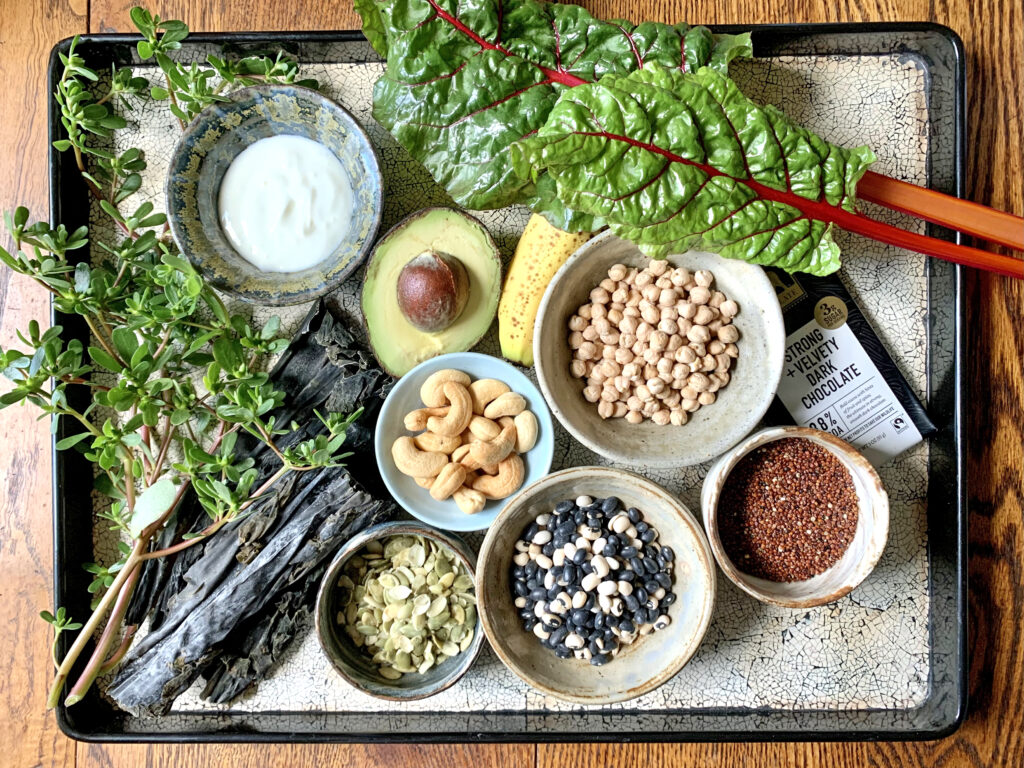
Here is just a small handful of magnesium-rich foods available right at your grocery store, co-op or farmer’s market. Better yet, figure out what you can grow yourself and start a garden right away!
- Almonds
- Brown rice
- Coriander, dried
- Fish
- Kelp
- Nettles
- Nutritional yeast
- Purslane, cooked
- Spinach, cooked
- Quinoa
- Wheat bran
- Yogurt
Soak it all in
If eating food isn’t your thing, topical application of magnesium is an inexpensive and effective way to get magnesium, while bypassing the digestive system (a boon to those suffering with GI issues). More research is needed to substantiate the benefits of topical application of magnesium but, centuries of humans swimming in seawater and soaking in mineral-rich thermal springs points to a widely appreciated type of hydro therapy that cannot be ignored. If you’d like to explore the transdermal method of acquiring magnesium, you can take a daily dip in the ocean, enjoy hot baths with magnesium flakes or make a simple solution of magnesium oil right at home. See the recipe below.
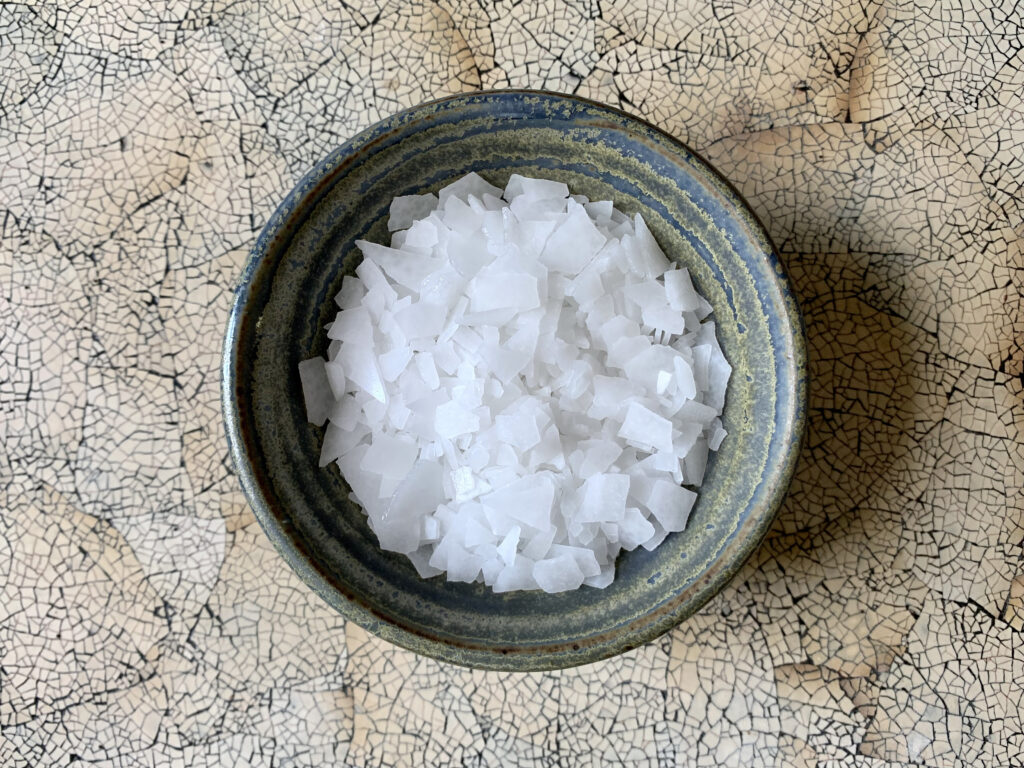
Magnesium Oil
Not an oil at all, but a reference to the oily feeling left on the skin after magnesium chloride is combined with water, magnesium oil is easy to make and apply. There are several forms of magnesium, but for this particular application, we’ll just talk about two that are suitable for topical use, magnesium sulfate and magnesium chloride. Magnesium sulfate, otherwise known as Epsom salt, is not actually salt but a compound made of magnesium and sulfur. The name comes from the original source, a saline spring in Epsom, England. People with sensitivity to sulfur may need to consider using magnesium chloride instead. Magnesium chloride, also a compound (magnesium plus chlorine), is found naturally worldwide, and contains the same healing properties as magnesium sulfate but is more readily absorbed and better utilized by the body. It is these properties that make magnesium chloride a favorite for making the following magnesium oil.
INSTRUCTIONS
Ingredients
*Makes about 1 ¼ cups or 300mL
1 Cup magnesium chloride flakes
1 Cup distilled water (this makes the solution more shelf-stable)
Glass measuring cup
Spray bottle
Directions
- Bring distilled water to a boil.
- Put magnesium flakes in a 2-Cup glass measuring cup.
- Once water has boiled, pour over magnesium flakes and stir until flakes dissolve.
- Let solution cool and pour into a spray bottle.
- Label and store up to 6 months.
To Use
First start with a patch test before applying all over.
Start with a few sprays of the solution and gradually increase the amount to up to 20 sprays per day. You could also apply once in the morning and once in the evening before bed.
You may notice some itchiness and slight tackiness, not unlike the feeling after swimming in the ocean. This can be remedied by either rinsing solution off or rubbing aloe gel (or coconut oil) on the sprayed areas 20 minutes after application, allowing the magnesium to absorb into the skin.
Not recommended for use with open cuts and scrapes as the solution can sting.
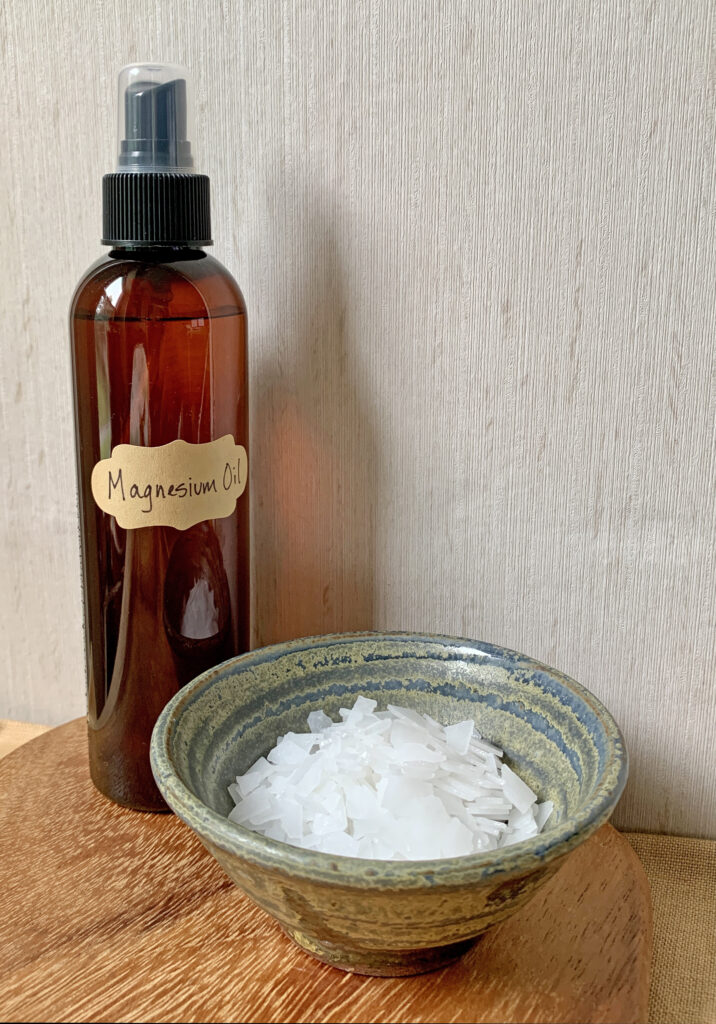
Wrapping it up
There are so many important functions that magnesium facilitates in our daily life and wellbeing that it’s worth considering whether you need to boost your own levels. Of course, with the guidance of your healthcare professional, combining magnesium with a diet of fresh and sustainably-produced fruits, vegetables, whole grains and animal proteins, could change your life for the better. I encourage you to go swim in the ocean (you’ll soak up some vitamin D too), plunge your feet into a comforting magnesium bath, or dig into some cashew ice cream with a side of dark chocolate – do what makes you feel good and then do it again tomorrow.
CAUTIONS
While it is rare to ingest toxic levels of magnesium through food, you can take too much magnesium supplementation. You will likely know if you have excess magnesium in the unmistakable form of diarrhea. According to research conducted by Oregon State University, long-term high doses of magnesium, such as above 5,000 mg per day, toxicity can occur causing reduced kidney function, confusion, irregular heartbeat, possibly even cardiac arrest.
Magnesium can also interact with drugs and or reduce the efficacy of certain medications so consult your doctor before introducing magnesium supplements!
References
American Migraine Foundation. (10-15-2013). Magnesium [Online Article] Retrieved from: https://americanmigrainefoundation.org/resource-library/magnesium/
Berkheiser, Kaitlyn for Healthline (10-28-2019) Magnesium Dosage: How Much Should You Take per Day? [Online Article] Retrieved from: https://www.healthline.com/nutrition/magnesium-dosage
National Institutes for Health. (2018). Magnesium fact sheet for health professionals. [Online Article] Retrieved from: https://ods.od.nih.gov/factsheets/Magnesium-HealthProfessional/
Oregon State University, Linus Paulin Institute. (2001-2021) Magnesium [Online article] Retrieved from: https://lpi.oregonstate.edu/mic/minerals/magnesium#safety
Weston A. Price Foundation. (9-23-2010) Magnificent Magnesium. [Online Article] Retrieved from: /https://www.westonaprice.org/health-topics/abcs-of-nutrition/magnificent-magnesium/

